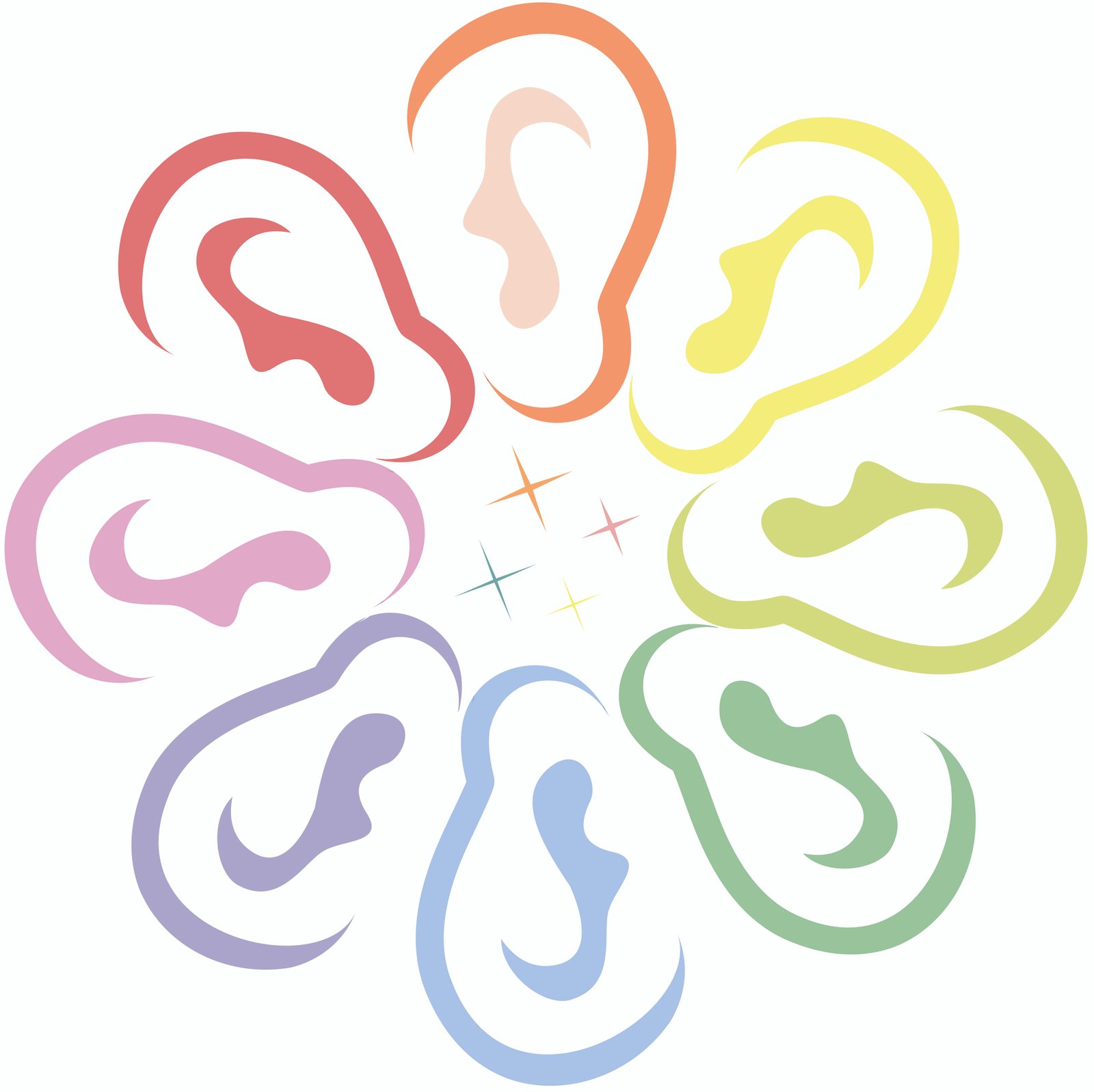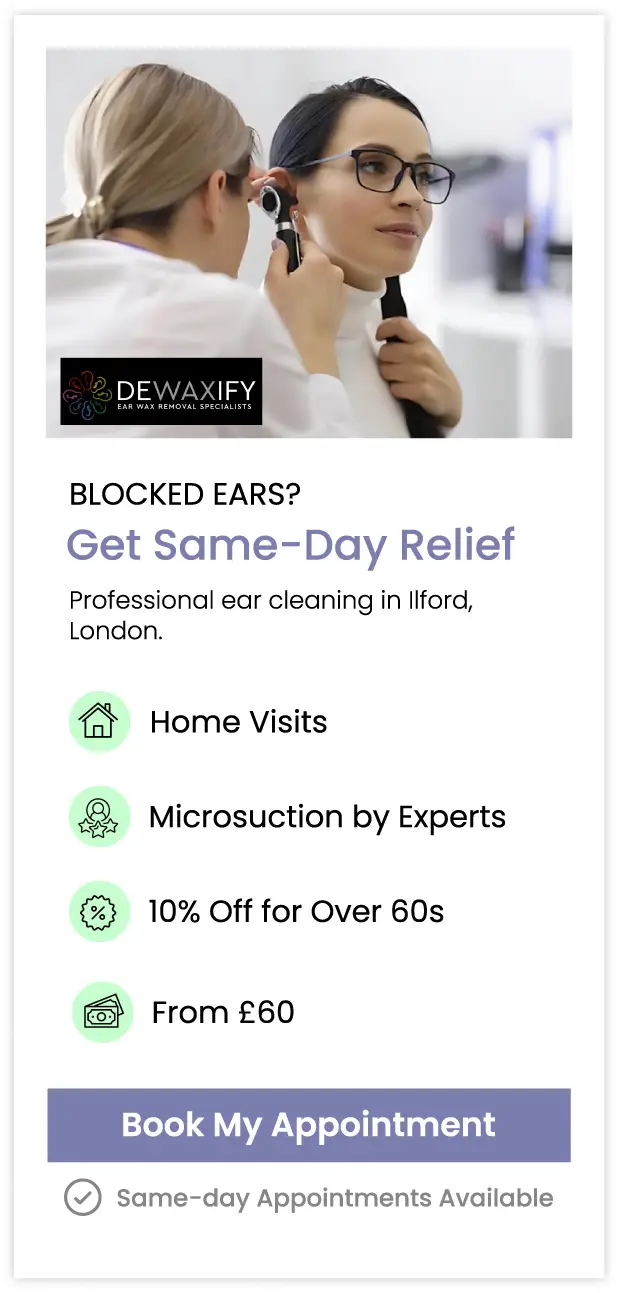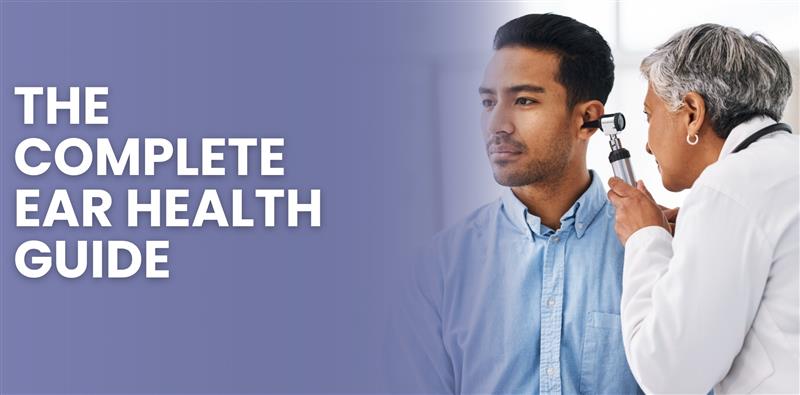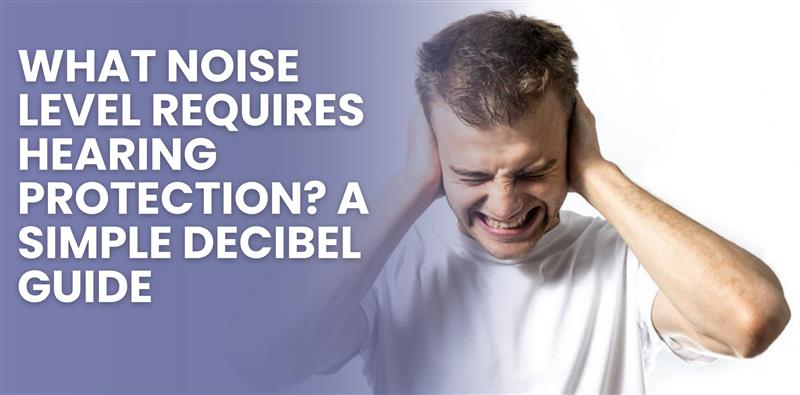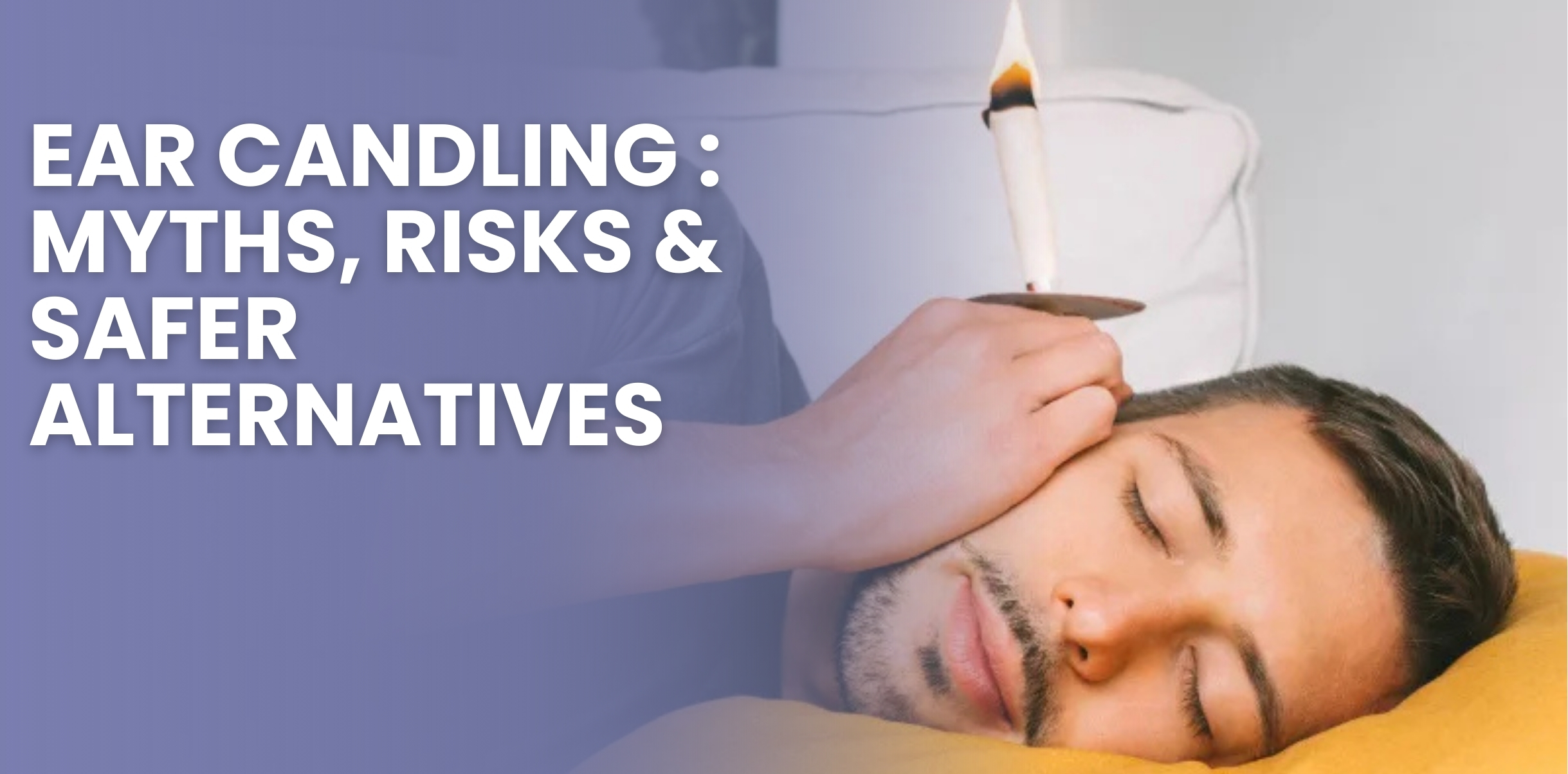If you’ve ever tried cotton buds, home syringes, or trendy gadgets, you know how a simple ear wax blockage can quickly turn into a frustrating problem.
Professional ear cleaning isn’t just about removing wax quickly. It’s about doing it safely and effectively.
In the hands of a trained clinician, it improves hearing clarity, reduces the risk of infection, and detects issues that DIY methods often miss.
With expert ear wax removal, you can enjoy long-term comfort and peace of mind, knowing your ears are in safe hands.
At Dewaxify, we use microsuction ear wax removal under direct vision, which keeps things precise and dry.
We also guide you on Ear wax removal, Olive oil for prevention, and offer a Free hearing test online so you can measure your hearing before and after care.
Discover the hidden benefits of professional ear cleaning, how expert methods differ from DIY, and realistic London costs. Get quick answers to common questions and a simple plan to keep your ears healthy and wax-free.
What Counts as Professional Ear Cleaning?
Professional care means a clinician inspects your ears first, then removes wax using approved methods. The two most common are:
- Microsuction. A clinician views your ear canal through a microscope or camera and removes wax with a fine suction tip.
Because there is no water, infection risk is lower, and it is suitable for many people with perforations or ear tubes. That is why many people prefer Microsuction ear wax removal over other methods.
NHS hospital pages describe microsuction as one of the safest ways to clean the ear. - Electronic irrigation. Also called syringing. A controlled stream of warm water washes out softened wax.
When used, it follows days of softening drops and should only be performed when the eardrum is intact.
Many GP services now limit routine irrigation due to risk controls and training requirements.
NHS guidance explains the basics of earwax management and cautions against unsafe methods.
The Big Benefits Most People Overlook:
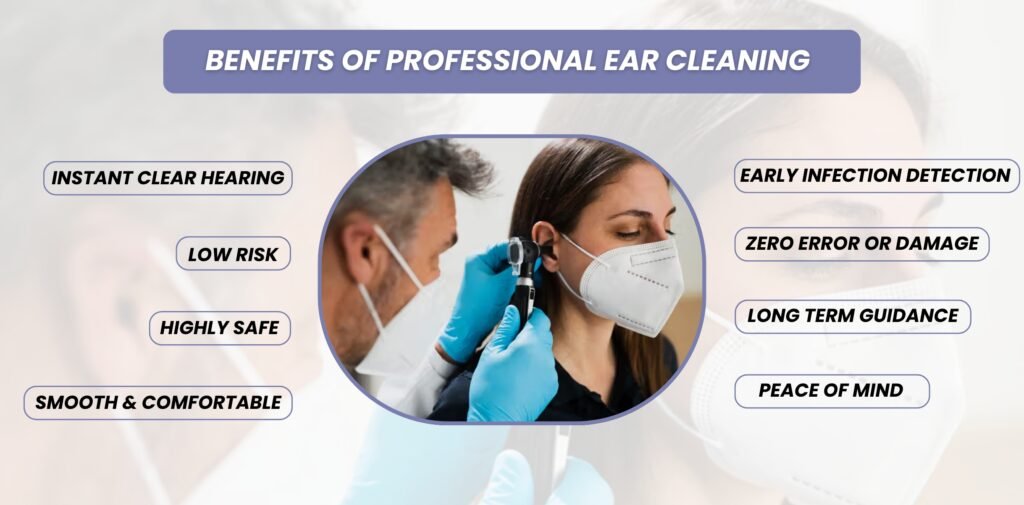
1. Clearer Hearing, Instantly
Ear wax removal is one of the quickest ways to restore hearing when sounds start feeling muffled.
With professional ear cleaning, wax is taken out safely so conversations become easier to follow, and background noise feels less overwhelming.
Many people describe the result as lifting a “cotton layer” that was blocking sound.
This instant clarity is one of the most noticeable benefits of treatment.
2. Reduced Risk of Infection
DIY methods like cotton buds, syringes, or ear candles often push wax deeper and cause tiny cuts inside the ear canal.
These small injuries can quickly lead to painful infections.
Professional ear cleaning uses sterile instruments under direct vision, which makes the process safe and hygienic.
By choosing trained care, you protect your ears from the risks that come with home-based ear wax removal.
3. Safe for Sensitive Ears
Not everyone can use home syringing kits safely, especially people with perforated eardrums, ear tubes, or chronic ear conditions.
Microsuction, a dry method of professional ear cleaning, avoids water and reduces risks for sensitive ears.
The clinician removes the wax with precision, ensuring no unnecessary pressure is applied.
4. Early Detection of Ear Problems
A big advantage of professional ear cleaning is that it doubles as a check-up for your overall ear health.
Clinicians use specialist tools to inspect the ear canal and eardrum while performing ear wax removal.
This can reveal infections, fluid build-up, or even early hearing loss, which you would not notice at home.
Detecting these problems early means faster treatment and better long-term protection.
5. Relief from Discomfort
Excess wax can trigger symptoms like itching, pressure, ringing (tinnitus), or dizziness.
Many people ignore these signs, thinking they will pass on their own.
With professional ear cleaning, the wax is removed safely, and these uncomfortable sensations usually disappear straight away.
Patients often describe a feeling of relief, balance, and overall comfort after proper ear wax removal.
6. No Guesswork or Damage
Home remedies such as cotton buds, hairpins, or ear candles often do more harm than good by pushing wax further inside.
Professional ear cleaning eliminates this trial-and-error approach by using approved, precise techniques.
Because the clinician can see exactly what they’re doing, the chance of accidental damage is almost zero.
This makes expert ear wax removal a much safer option than DIY attempts.
7. Long-Term Guidance
Professional care doesn’t stop once the wax is cleared.
At Dewaxify, patients receive tailored advice on prevention, including whether to use olive oil for ear wax removal and how often.
Clinicians may also recommend a free hearing test online, so you can measure your hearing before and after treatment.
This long-term guidance helps you keep your ears healthy and avoid frequent blockages.
8. Peace of Mind
Many people feel anxious about trying DIY solutions in case they damage their ears.
With professional ear cleaning, you can be confident that everything has been carried out safely by a trained clinician.
You also get reassurance that your ear canal and eardrum are in good condition after ear wax removal.
That peace of mind is often as valuable as the physical improvement in hearing and comfort.
Risks of DIY Ear Wax Removal vs. Professional Ear Cleaning
While professional ear cleaning is carried out under safe, controlled conditions, many DIY ear wax removal methods can do more harm than good.
People often search for tips on how to open a blocked ear at home, but cotton buds, ear candles, and home syringing kits usually make the problem worse.
Instead of clearing the blockage, they often push wax deeper, cause infections, or even damage the eardrum.
The infographic below highlights the key risks of at-home methods compared to the safety of professional ear wax removal.
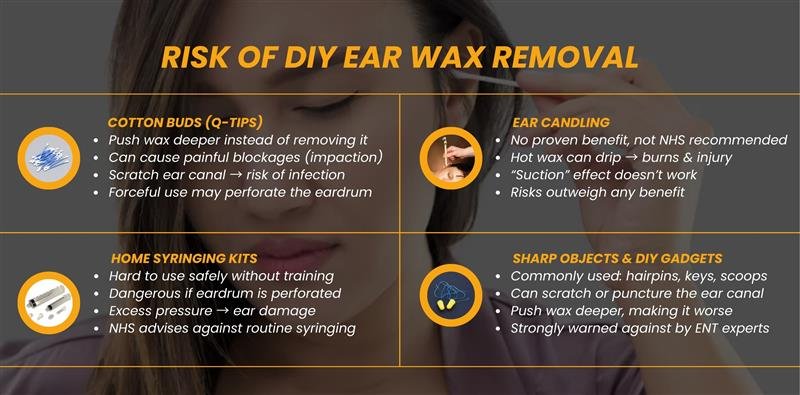
When to stop DIY and book a clinician
- Pain, discharge, or bleeding after any home attempt
- Fullness that lasts longer than one week despite drops
- Sudden hearing loss in one ear
- Recent ear surgery, grommets, or known perforation
- Recurrent blockages, even with good prevention
These are flags for a clinical review rather than another round of home flushing.
Professional Methods Compared:
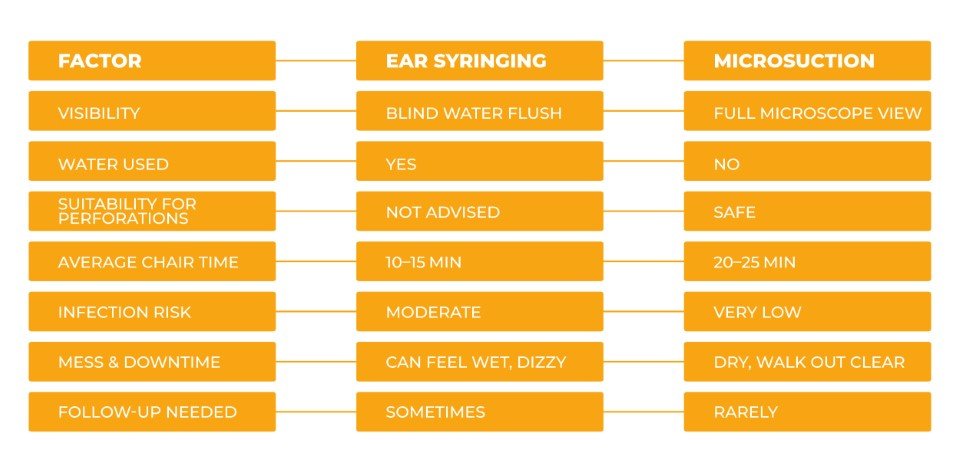
Average Cost of Professional Ear Cleaning in London”
The cost of professional ear cleaning in London can vary depending on the clinic, location, and the method used.
On average, private clinics charge between £60 and £100 per session for ear wax removal.
Microsuction is often at the higher end of this range because it is carried out under direct vision and is considered one of the safest methods.
While NHS services are limited and may no longer cover routine ear wax removal, private care offers quicker appointments, modern techniques, and a more comfortable experience.

Affordable Professional Ear Cleaning Prices at Dewaxify
At Dewaxify, we aim to keep ear care accessible without compromising on quality.
Our professional ear cleaning (microsuction) starts at £60 for one ear or £80 for both ears, making us one of the most affordable options in London. For more information, you can visit our pricing page here.
Every appointment includes a full ear health check, safe wax removal under direct vision, and personalised aftercare advice.
We also provide added value with olive oil for ear wax removal guidance and a free hearing test online, so you can track your progress before and after treatment.
FAQs
Is professional ear cleaning worth it?
Yes, because removal under vision is precise, quick, and safer than blind DIY. It also allows the clinician to spot infections or dermatitis early.
How often should you get your ears professionally cleaned?
There is no one timetable. Heavy wax producers, swimmers, and hearing aid users often need care every 6 to 12 months. If you are symptom free, follow a prevention plan and book only when fullness, dulled hearing, or whistling aids appear.
